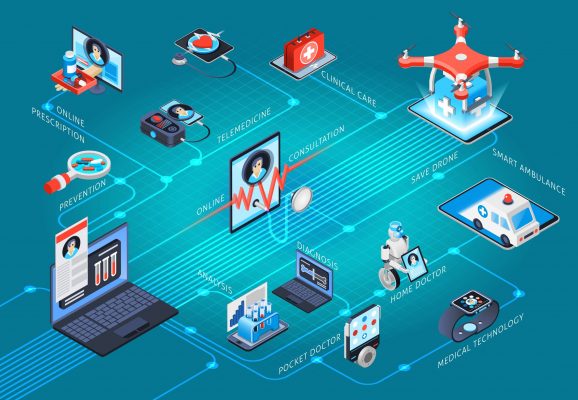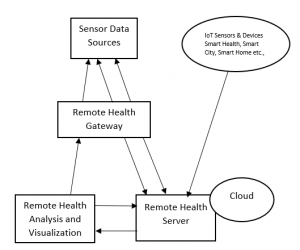
Image Source: Freepik
Several innovative technologies are emerging because of the rapid expansion of data in recent years, with Artificial Intelligence (AI) at the forefront of the innovations.
Why is Artificial Intelligence (AI) at the forefront of innovations in health care systems?
AI with its limitless capabilities has the potential to transform patient medical care. Given the state of health care systems exposed by the 2020 COVID-19 pandemic, this revision investigates the effects of applying an AI-driven universal healthcare strategy to evaluate decision-making. The purpose of this learning is to deliberate current intelligent healthcare systems majorly focused on areas such as portable and smartphone gadgets for patient monitoring, machine learning for diagnosis of diseases, and assistive structures, such as social robots established for the adaptable living situation. Remote surveillance systems can provide individual and worldwide sensing on multiple scales under three categories: personal, group, and social sensing. The real-time tracking systems are built for single persons to gather and examine personal information. Monitoring users’ exercise habits, assessing activity levels, and identifying symptoms associated with psychiatric problems are all common instances. Although the data generated is intended solely for the user’s information, it can also be purposeful to share it with medical professionals. Fitbit, Google Glass, and the Nike+ FuelBand are all intelligent personal monitoring devices.
Why is Artificial Intelligence (AI) at the forefront of innovations in health care systems?
Patient monitoring applications, such as contests based on specific goals such as running distance, weight loss, calorie consumption, and so on, are a few examples. Community or population monitoring refers to large-scale participation in health and activity monitoring. Crowd modeling and monitoring entail community-wide data analytics for greater performance. However, it entails collaboration between people who do not trust one another, emphasizing the necessity for confidentiality protection and possibly minimal user engagement. Measuring the transmission of diseases over an area, looking for certain medical disorders, and so on are examples of population monitoring. Although the influence of scale is on monitoring applications is under investigation, numerous research questions majorly remain unanswered including intelligence sharing, data rights, data synthesis, protection, and confidentiality, data mining methods, delivering valuable opinions.

Anatomy of Smart Health Care System
The figure depicts the different stages of the overall architecture of the health care monitoring system. Four different stages are there in this monitoring system, which includes:
- Sensor Data Collection and Feature Extraction.
- Remote Health Server
- Remote Health Gateway
- Remote Health Analysis and Visualization.
In the first phase, data collection can be done by using various resources like physical, virtual, and social sensors, smartphones, smartwatches, and bracelets, etc, and user-generated content on social media. Once the data collection process is done, then local processing and analytics must happen. This phase ends with some health mobile applications. The same sensed or collected data, events, and data from IoT sensors and devices are to be loaded into the server for further discovery. Personal request and response information can be shared between mobile applications and health servers via a remote health gateway. In the second phase of this monitoring system, processing, analysis, and mining of streaming or stored sensing data take place on a remote health server that is associated with the cloud environment. Storing, filtering, and aggregation operations can be done in a cluster or cloud. The third stage of this system is remote health analytics and visualization. Personal health services and notifications can be shared at this stage on mobile applications. The Health Analytics or Visualization phase can send a query to a remote server, and the server can respond with analytics knowledge.
- Dr. Senbagavalli M., Associate professor/IT, Alliance College of Engineering & Design, Alliance University, Bangalore.
- Dr. Ramalakshmi K., Associate Professor/CSE, Alliance College of Engineering & Design, Alliance University, Bangalore.
- Dr. Saswati Debnath, Assistant Professor/CSE, Alliance College of Engineering & Design, Alliance University, Bangalore.
